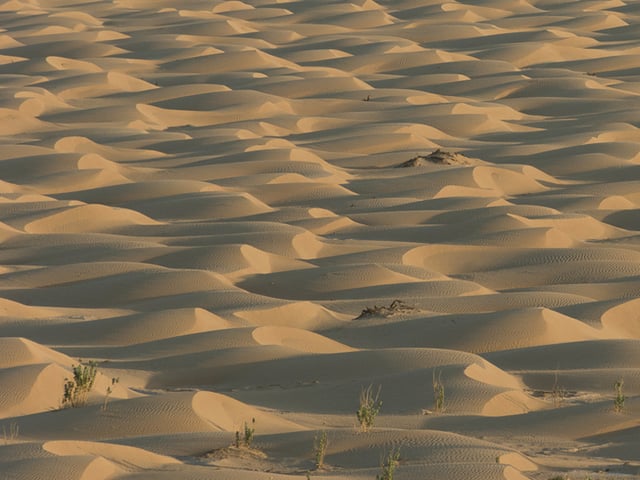ʿĀd

ʿĀd

Kingdom of ʿĀd قَوْم عَاد | |
|---|---|
| unknown–unknown | |
| Capital | Iram of the Pillars |
| Common languages | Old South Arabian, Mehri |
| Religion | Arabian polytheism |
| Government | Monarchy |
| King | |
| History | |
• Established | unknown |
• Disestablished | unknown |
ʿĀd (Arabic: عَاد, ʿĀd) was an ancient tribe mentioned frequently in the Qurʾan.[1]
ʿĀd is usually placed in Southern Arabia,[2] in a location referred to as al-ʾAḥq̈āf ("the Sandy Plains," or "the Wind-curved Sand-hills").[1][3] The tribe's members, referred to as ʿĀdites, formed a prosperous nation until they were destroyed in a violent storm. According to Islamic tradition, the storm came after they had rejected the teachings of a Monotheistic prophet named Hud.[1][2] ʿĀd is regarded as one of the original Arab tribes, the "lost Arabs". Their capital may have been what is known as "Iram of the Pillars" in the Qurʾan although that may have been the name of a region or a people.[4][2][5]
Kingdom of ʿĀd قَوْم عَاد | |
|---|---|
| unknown–unknown | |
| Capital | Iram of the Pillars |
| Common languages | Old South Arabian, Mehri |
| Religion | Arabian polytheism |
| Government | Monarchy |
| King | |
| History | |
• Established | unknown |
• Disestablished | unknown |
Legend

Sand dunes in Ar-Rub' Al-Khali (The Empty Quarter), Oman
In religious stories, Hud and the tribe of ʿĀd have been linked to a legendary king named ʿĀd, who ruled over a region whose capital was "Wūbar".[6]
Mentions in Qur'an
There are 24 mentions of ʿĀd in the Qurʾan, namely (7:65:2) (the second word of Surah 7, Verse 65), (7:74:7), (9:70:9), (11:50:2), (11:59:2), (11:60:10), (11:60:15), (14:9:9), (22:42:8), (25:38:1), (26:123:2), (29:38:1), (38:12:5), (40:31:5), (41:13:8), (41:15:2), (46:21:3), (50:13:1), (51:41:2), (53:50:3), (54:18:2), (69:4:3), (69:6:2) and (89:6:6).[7]
See also
Arabian Desert
Madyan (Midian)
People of al-Ukhdud ("the Ditch")
People of Lut (Lot)
People of Ya-Sin
Sabaʾ (Sheba)
Thamud